Amazing fossils of sea creatures discovered in the UK
- Published
- comments
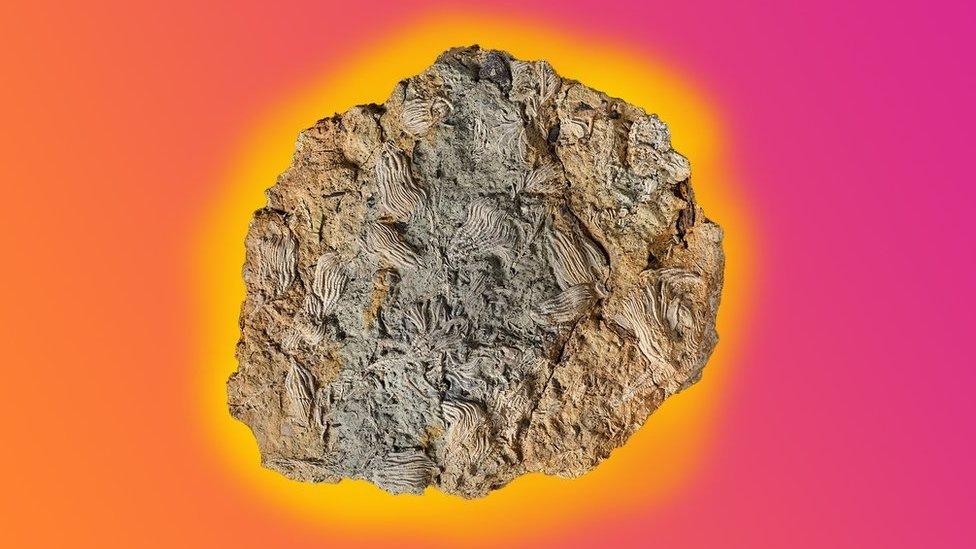
Lots of different types of sea creatures have been preserved including a type of feather star, a brittle star and a sea cucumber which are thought to be new species
Fossils of starfish, feather fish and sea lilies from the middle Jurassic period have been discovered in the UK, and it's thought to be the biggest find of its kind so far!
They were discovered by non-professional palaeontologists Dr Neville Hollingworth and Sally Hollingworth, in Wiltshire earlier this year.
The animals are thought to have died millions of years ago after being covered by an underwater mudslide.
Sally Hollingworth said: "They are 167 million years old, these little critters, and the preservation is just amazing."
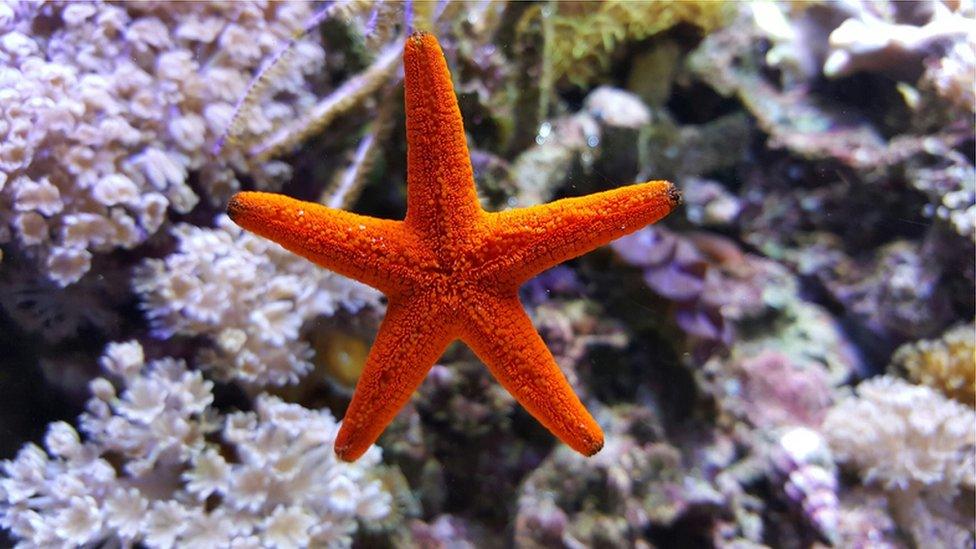
Star fish are echinoderms and fossils date back back to the Ordovician period around 450 million years ago
Discovering the fossils
The Hollingworths were researching the Wiltshire area on Google maps, when they came across a local quarry and asked to inspect the area.
This is where they discovered a slab with the fossils of star fish and other sea creatures that lived during the middle Jurassic period (174 to 164 million years ago).
Dr Hollingworth said: "we came on down to the bottom of the quarry and we noticed that the floor of the quarry was a clay layer, and on the surface of the clay with lots and lots of little fossils which we call crinoids or feather stars."
Their discovery led Dr Tim Ewin, who is the senior curator in Earth sciences at the Natural History Museum to get funding to inspect the site further.
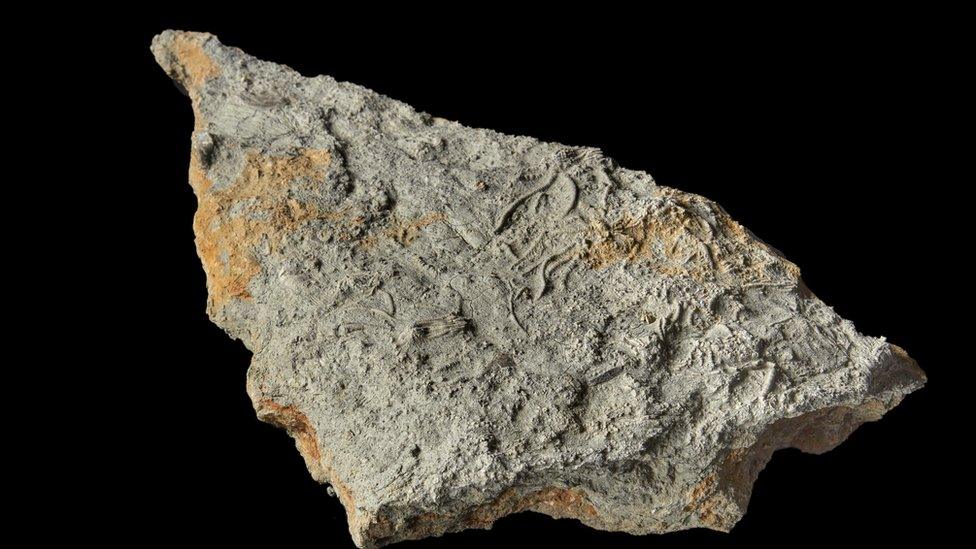
Can you spot the starfish and feather fish in the rock?
"Jurassic Pompeii"
The discovery has been called a "Jurassic Pompeii". Pompeii was a Roman city which was preserved after it was covered in ash from a nearby volcanic eruption.
Scientists think these creatures died in a mudslide which is what led to them becoming fossilised.
Dr Hollingworth said: "From all the evidence we've gathered so far, it was quite sudden and they were probably buried alive by mudflow, some sort of submarine landslide buried them all where they were."
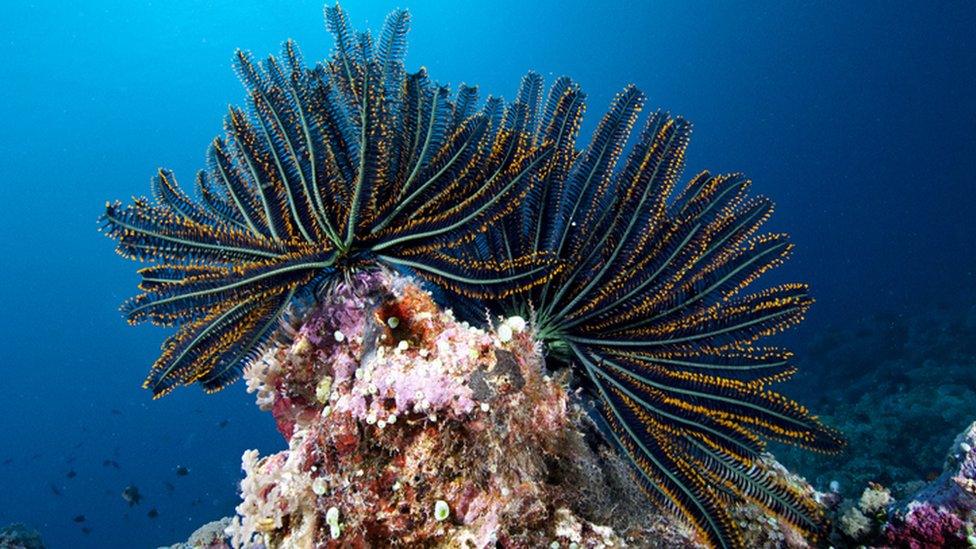
Feather stars are Crinoids - they use their 'arms' to filter our plankton from the water as it flows past.
Full star fish, feather star and sea lilies fossils can be hard to preserve because their delicate skeletons fall apart soon after death.
The team uncovered lots of specimens which are thought to be more than 150 million years old including at least three new species not yet known about.
There are so many well preserved creatures that scientists are hoping to discover even more previously unknown animals.
- Published2 April 2019
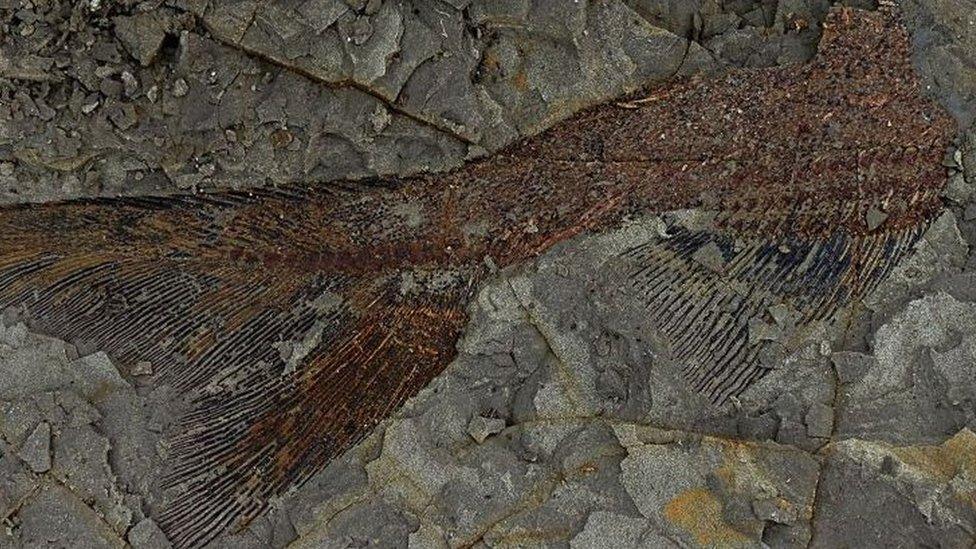
- Published21 December 2015
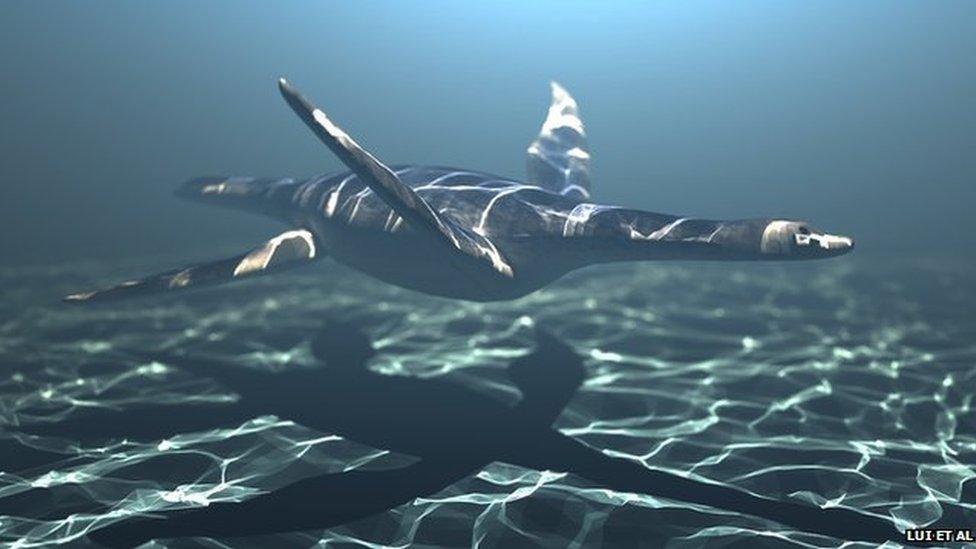
- Published7 July 2021

